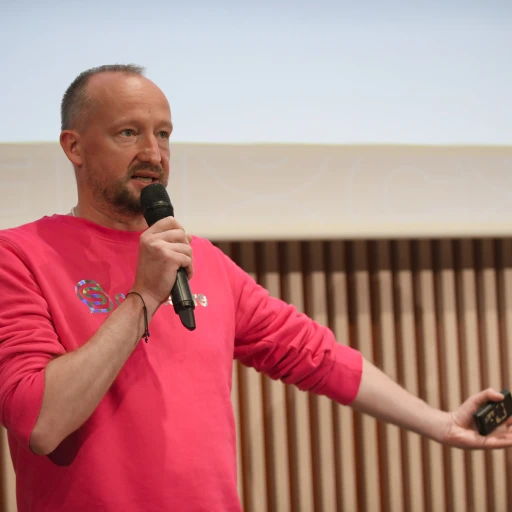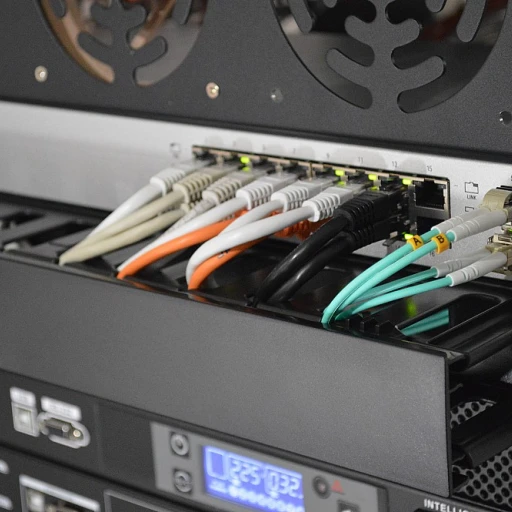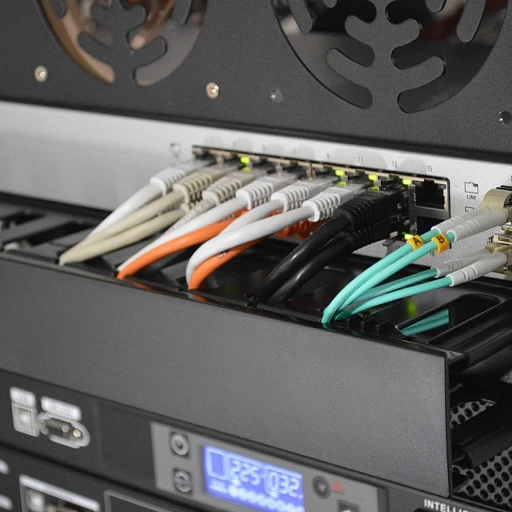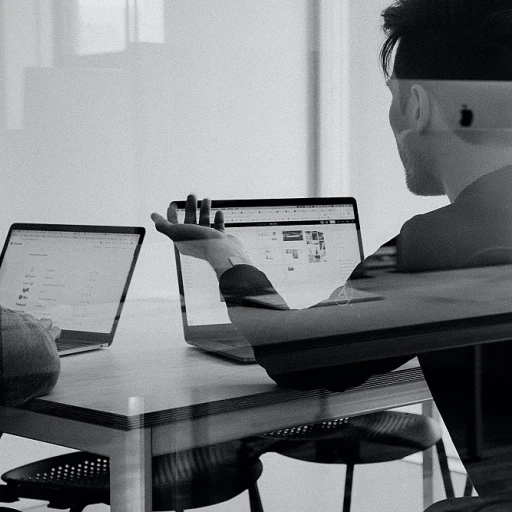Understanding Headless CMS Architecture
What is a Headless CMS?
Imagine a content management system that lets you manage your content without being tied to a specific front-end. That's what a headless CMS does. Unlike a traditional CMS, where the backend and frontend are tightly coupled, a headless CMS separates the content management from the presentation layer. This decoupled architecture allows developers to deliver content across various digital channels using APIs.
How Does It Work?
In a headless setup, the CMS acts as a content repository. Developers use APIs to pull content and display it on different platforms, whether it's a website, mobile app, or even IoT devices. This flexibility is a game-changer for businesses aiming to create seamless digital experiences across multiple channels. The backend handles the content management, while the frontend is free to evolve independently, offering a more dynamic user experience.
Why Choose Headless?
Headless CMS architecture provides the freedom to use any tech stack for the frontend, which can significantly enhance the user experience. It’s particularly beneficial for businesses looking to innovate rapidly and adapt to changing digital trends. For those interested in eCommerce, exploring the benefits of headless CMS can be a crucial step in staying competitive in a fast-paced market.
As we delve deeper into this topic, we'll explore the advantages and challenges of adopting a headless CMS, its role in future content delivery, and real-world success stories. Stay tuned to learn more about how this approach is shaping the future of content management.
Benefits of Adopting Headless CMS
Perks of Embracing the New CMS Approach
Adopting a headless CMS can offer a bunch of perks, especially when compared to traditional systems where the frontend and backend are tightly bound. Let's break down some of these benefits to give you a better picture:- Flexibility and Freedom: A headless setup offers flexibility like never before. Developers are no longer restricted to specific front-end tools. This means you can choose whatever tech stack suits your project best. It's a bit like swapping out that old clunky smartphone for the latest model—you get way more options and better performance.
- Multi-Channel Capability: Since the frontend is decoupled, content can be easily pushed across different channels. Whether it's web, mobile, or even smart devices, a single CMS can manage content delivery across the board, providing a seamless experience.
- Improved User Experience: With such systems, businesses can tailor the user experience without being limited by a one-size-fits-all design. Want your website to look sleek and modern? Or maybe your mobile app needs some tweaks? Not a problem. You can control the presentation layer effortlessly.
- Scalability: If your business is growing (and we hope it is!), a headless CMS can handle the scale with ease. It's built to expand as you do, without the headaches of a traditional CMS.
Challenges in Implementing Headless CMS
Obstacles You Might Face with Headless CMS
Stepping into the world of headless content management system, while exciting, isn't without its potholes. Imagine you're swapping out an old-school traditional CMS for a shiny new headless architecture. That leap can uncover a fair share of hurdles. No sugar-coating here—let's break it down. First off, developers might hit a snag due to the sheer change in work process. With headless CMS, they need to befriend APIs, a shift from the more straightforward workflow traditional systems offer. The decoupling of the frontend and backend in a headless CMS demands extra time and effort when piecing together the content delivery channels. This very flexibility and freedom that attract developers to headless architecture can also add complexity while crafting a seamless digital experience. Then there's the presentation layer—you see, with traditional CMS, things come pre-packaged. Your backend and frontend are like partners, doing the salsa together. Headless CMS? Not so much. You've got to be on your toes and ensure that your digital experiences are in sync across all devices and platforms, each with its unique demands. It takes a serious grasp of tech stack management to keep things smooth. When throwing emerging technologies like AI and IoT into the mix, the issues can compound. Sure, headless CMS offers the chance to integrate with cutting-edge tools, but keeping up with constant updates and modifications to those systems can be an ongoing challenge, tweaking the user experience every step of the way. Balancing the act of managing content across diverse channels requires a seasoned hand. For those considering how it all fits within a larger tech strategy, it’s worth dipping into why low-code platforms might be the ally you didn't know you needed. They help resolve some of the complexity headless CMS solutions introduce to the table. Before you write off these potential downsides, remember the shifting dynamics in how we handle content delivery. While you'd expect a few speed bumps initially, the payoffs at the journey's end are a flexible and scalable management system ready to adapt to whatever the digital future has in store. Stick with it, and you might just make that transition smoother than you'd imagined.Headless CMS and the Future of Content Delivery
The Evolving Role of API in Content Management
The good old days of managing content were simple enough—everything lived under a single roof. The traditional CMS was one hefty package, offering both backend and frontend solutions. But as content channels expanded and digital experiences matured, the shift towards a headless architecture became not just beneficial but necessary. Headless CMSes break content away from its presentation layer, orchestrating an experience where APIs step into the spotlight. By bridging the gap between the backend content and frontend delivery, APIs offer developers the flexibility to push content to various digital platforms seamlessly. Whether it's a website, mobile app, IoT device, or any other digital touchpoint, this decoupled structure meets ever-evolving demands.Empowering Developers with Decoupled Solutions
Developers today crave more control and flexibility. With a decoupled CMS, they can choose their preferred tools and frameworks tailor-made for rich user experiences. This approach opens up possibilities for creating bespoke digital platforms without being tethered to a monolithic management system. Imagine having a system where your backend doesn’t dictate your frontend. It’s about letting developers work their magic and craft custom frontend experiences, drawing from shared content resources across diverse channels. Headless content management systems foster a culture where creativity goes hand in hand with functionality.A Glimpse into the Future with Multi-platform Content Delivery
The need for multichannel content delivery systems is clearer than ever. As more users engage with content across a variety of devices and platforms, headless CMS solutions will only continue to carry weight. They’re the silent juggernauts making sure your content reaches the right audience, at the right time, and through the right platform. We'll get used to seeing content management systems supporting a broader scope of digital platforms in unprecedented ways. Developers can design once and deploy anywhere, creating a tailored user experience for specific channels. To truly get a grip on where headless CMS is leading us in terms of content delivery, dive deeper into exploring the evolution of software user experience, highlighting how these modern systems shape our digital interactions.Embracing Headless CMS: The Path Forward
The progression toward headless CMS adoption isn’t about merely staying on trend—it's an intrinsic shift in content management strategies. Future software solutions will likely see headless CMS as the backbone, guiding transformations in digital experiences. As we embrace this change, digital ecosystems will not only operate seamlessly but thrive, offering experiences that surpass user expectations. The flexibility, power, and innovation of headless architecture place it as a key player in our digital future. As traditional methods continue to fade, the stage is set for headless CMS to lead the charge in redefining how we manage content across the digital spectrum.Case Studies: Successful Headless CMS Implementations
Real-World Success with Headless CMS
When it comes to adopting a headless CMS, seeing real-world applications can be incredibly motivating. Let's explore a few standout examples where organizations have successfully integrated headless architecture into their content management strategies, proving its worth in the ever-demanding digital space.
Spotify: Harmonizing Content Across Channels
Spotify, the music streaming giant, showcases a brilliant use of headless CMS. By decoupling their content management system, Spotify can deliver seamless user experiences across various platforms and devices. Their headless approach allows developers to focus on frontend innovation without being bogged down by backend constraints. This flexibility has enabled Spotify to maintain a consistent presentation layer, ensuring that their brand voice resonates with users, whether they are on a smartphone app or a web browser.
National Geographic: Storytelling Reimagined
National Geographic is another example of leveraging headless content management to enhance storytelling. With a vast array of digital channels, from online articles to immersive virtual reality experiences, National Geographic needed a robust system that could manage content efficiently. By transitioning to a headless CMS, they have empowered their content creators to push boundaries, delivering captivating stories across different platforms without sacrificing quality or consistency.
Target: Retail Meets Headless Innovation
Retail giant Target has embraced headless CMS to elevate their digital experiences. In the competitive retail sector, delivering personalized content is crucial. Target's headless architecture allows for rapid adaptation to consumer trends and preferences, providing a tailored shopping experience. The decoupled system supports various APIs, enabling seamless integration with their existing tech stack and ensuring that content delivery remains fast and efficient.
Conclusion: The Power of Headless CMS
These case studies highlight the transformative impact of headless CMS architecture. From music streaming to storytelling and retail, the flexibility and efficiency of headless systems are undeniable. As more organizations recognize the potential of decoupled CMS, we can expect a continued shift towards this innovative approach in content management.
The Role of Headless CMS in Emerging Technologies
Bridging the Gap with IoT and AI
As the Internet of Things (IoT) and Artificial Intelligence (AI) continue to shape our digital experiences, headless CMS architecture stands as a key player in managing content across multiple channels. Imagine a smart home where your refrigerator, thermostat, and even your coffee maker communicate with each other. The headless CMS can serve as the central hub for content management, ensuring that all devices have the latest information and updates.
AI-driven personalization is another area where headless CMS shines. By leveraging APIs, developers can integrate AI algorithms that analyze user behavior and preferences. This allows for a more personalized user experience, whether it's suggesting content on a website or tailoring recommendations on a mobile app. The decoupled nature of headless CMS makes it easier to implement these AI features without overhauling the entire system.
Augmented Reality and Virtual Reality
Augmented Reality (AR) and Virtual Reality (VR) are transforming how we interact with digital content. Headless CMS can manage content for these immersive experiences, providing the flexibility to deliver information in new and engaging ways. For instance, a retail company could use AR to show how furniture looks in a customer's living room. The headless CMS would manage the content, ensuring that the 3D models and product details are up-to-date and consistent across all platforms.
Seamless Integration with Emerging Platforms
With the rise of new digital platforms, from smartwatches to voice-activated assistants, the need for a flexible content management system has never been greater. Headless CMS allows developers to integrate with these platforms easily, using APIs to push content to various frontends without being tied to a specific presentation layer. This adaptability is crucial for businesses looking to stay ahead in a rapidly changing tech environment.
In summary, the role of headless CMS in emerging technologies is all about providing a flexible and efficient way to manage content across a wide range of digital experiences. By decoupling the backend from the frontend, businesses can innovate faster and deliver more personalized experiences to their users.















